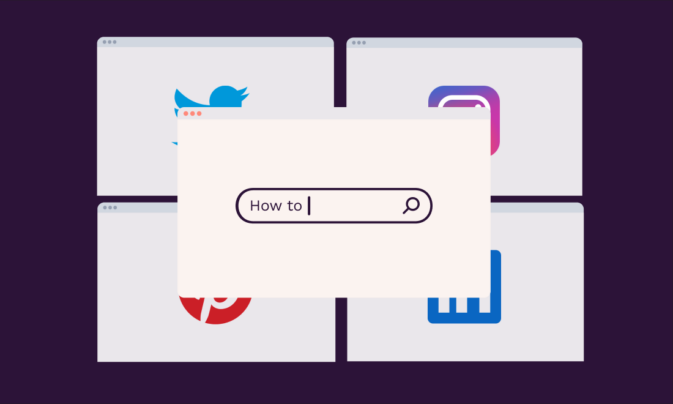75% of recruiters globally are struggling to fill roles in 2024. Companies of all sizes and across all industries are being hit by the ‘Big Talent Gap.’
As attracting high-quality candidates has gotten tougher, pulling together a strong sourcing strategy is more important than ever. Gone are the days of the newspaper job ads—today’s sourcing is sophisticated, refined, and tech-driven.
Here, we’ll explore how you can improve your HR sourcing game for better recruitment results.
TL;DR—Key Takeaways
- HR sourcing is the process of personally inviting qualified candidates to apply for your job openings instead of relying on applicants coming in through a job posting.
- Sourcing and recruiting are interconnected roles. Sourcing plays a bigger role earlier on in the talent acquisition funnel, while recruitment helps applicants navigate the selection process.
- You can source candidates passively, actively, or directly. Each method has its benefits and is better suited to different hiring needs.
- Building a talent pool of sourced candidates can improve your time-to-hire rate and reduce recruitment costs.
- Toggl Hire automatically matches candidates in your talent pool with open job roles based on their skills profile. It’s an efficient way to engage your sourced candidates.
So, what is HR sourcing?
HR sourcing involves identifying and inviting qualified candidates to apply for your open positions instead of waiting for them to find you. The ultimate goal is to bring high-quality candidates into your recruitment pipeline.
Sourcing is part of a company’s broader talent acquisition strategy. It builds talent pipelines, engages passive candidates, and ensures easy access to top talent.
It might not make sense to source candidates for every job opening—some positions will attract plenty of top-notch job seekers without any sourcing efforts. But if a specific role is highly specialized, it might be worth doing some outreach to suitable candidates.
The subtle difference between sourcing and recruiting
Sourcers and recruiters work together to create a robust talent acquisition strategy. They’re two different but highly complementary roles:
What do sourcers do?
Talent sourcing is about finding and attracting potential candidates, often focusing on passive talent. Sourcers also:
- Work with hiring managers to identify ideal candidates and present them with a relevant job opportunity
- Search for candidates on social media platforms like LinkedIn or GitHub
- Join networking events, webinars, and conferences to source the best candidates for open roles
- Build and maintain relationships with potential candidates throughout the sourcing process
What do recruiters do?
Recruiting involves managing the candidate relationship and guiding them through the hiring process. Recruiters also:
- Screen applications and resumes, then shortlist the right candidates according to skill set and job requirements
- Conduct interviews and assign tasks, if applicable, to assess whether the candidate is the best fit for the job
- Build relationships with applicants through the process of interviewing for a job opening
- Work with candidates who came in via talent sourcing and those who applied independently

3 types of HR sourcing
Just as there are different types of candidate assessment, there are three different types of sourcing.
Passive sourcing
Passive sourcing involves reaching out to candidates who aren’t actively looking for a new job. This can be a great way to snag the best talent, who are not technically on the market but could be interested in the right offer.
This approach can uncover hidden talent or specialized skills and reduce time-to-hire by building a proactive talent pipeline without job postings. There are plenty of creative sourcing ideas you can use, including hosting events or starting a company culture YouTube channel.
Active sourcing
Active sourcing targets people who are currently looking for new opportunities. HR teams will use several different strategies to reach the right people, such as attending career events, tapping into social networks and job boards, or asking for employee referrals.
The clear benefit of this approach is the reduced time-to-hire, making it a great strategy for urgent roles.
Direct sourcing
Both passive and active sourcing might rely on an external recruitment agency, HR professionals, or third-party platforms. Direct sourcing does what it says on the tin—it involves you personally reaching out to a specific candidate to fill a highly specialized job description.
Direct sourcing involves hand-picking the perfect candidate for your hiring needs. Engaging candidates this way sends a positive message that you’ve earmarked someone as a great fit for your organization. It starts the rapport off on a high note and can streamline the recruitment process for niche positions.

How to create a candidate sourcing plan
If you aren’t sure how to start sourcing talent, follow this step-by-step guide to build an effective talent acquisition strategy.
- 🕵️♂️ Conduct market research: Research the job market relevant to the roles you’re hiring for. Exploring industry trends, salary benchmarks, and in-demand skills will allow you to gauge what kind of candidate you need.
- ⭐ Define your candidate personas: Use what you’ve learned from your research to detail the key skills, qualifications, experiences, and personality traits you’re looking for in your ideal candidate. This will streamline your sourcing efforts and ensure you target the right candidates from day one.
- 📊 Choose your sourcing channels: Where does your ideal candidate persona spend time online? Is it LinkedIn, GitHub, Behance, or Discord? Don’t be afraid to try niche job boards or industry-specific forums. Employee referrals can also be a valuable source of talent. Cast your net wide by covering a few different channels.
- 🏆 Establish metrics for success: The best metrics will depend on your recruitment strategies and goals. These could be the number of candidates sourced, time-to-fill, or quality-of-hire. This will help you make data-driven improvements down the line.
- 🌍 Brush up on global hiring compliance: If you’re hiring globally, ensure your hiring practices comply with the labor and visa laws in the relevant countries. The last thing you want is a legal complication just as you’re onboarding your new hire.
Remember that your sourcing plan should always align with your organizational goals. Revisit and refine every six months based on your data and new priorities.
Effective HR sourcing strategies for 2025
By 2025, Gen Z will make up more than 25% of the workforce. Attracting and retaining this cohort will be one of the biggest challenges recruiting teams face. Here are three key strategies we predict will help hiring managers source Gen Z candidates with confidence and ease.
Leverage the right technology
Over 33% of CEOs and senior leaders are already using AI tools to improve productivity and efficiency. This number will continue to grow as machine learning models improve and become more accessible.
Gen AI makes sourcing more efficient by automating repetitive tasks like resume screening and email outreach, freeing up more time for higher-value activities like candidate communication.
Data analytics offers deeper insights into your pipeline efficiency and sourcing channel quality so you can refine your sourcing strategy.
Building better talent pipelines
In our AI world, the personal touch is increasingly important. Sourcing allows you to make a strong (positive!) first impression on a candidate. Building rapport with a few personal touches will keep your organization at the top of the candidate’s mind and keep a steady talent flow for future roles.
You can nurture the relationship through regular newsletter communication, personalized company updates, or invites to exclusive events.
Enhance employer branding (even more)
According to LinkedIn’s Future of Recruiting Report, Gen Z prioritizes opportunities for advancement (+36%) and upskilling (+34%) more than any other generation. Ensuring your learning and development opportunities shine through in your employer branding will attract young, top talent.
You can also showcase your company culture and values through authentic employee testimonials, personality-packed social media content, and behind-the-scenes glimpses into daily work life. But more than anything, remember to embody your values in all your candidate interactions. Otherwise, the values on your People page will read like nothing more than an aspirational list.
Attract and assess top talent with Toggl Hire
Behind Toggl Hire’s wow-worthy candidate experience is a seamless, user-friendly talent pool builder.
Create your curated database of pre-qualified candidates that helps you fill positions faster and more cost-effectively.
Candidates can create their own skills profile by taking a short, fun (and free!) quiz. Based on the data, you can automatically match candidates to future job openings that match their strong suits. If you want to stick in your sourced candidates’ minds, we guarantee this will do it!
But Toggl Hire is more than an HR sourcing tool—its powerful recruitment analytics and customizable workflows help you streamline recruitment processes across every department with ease.
Create a free Toggl Hire account and try it out today!
Julia Masselos is a remote work expert and digital nomad with 5 years experience as a B2B SaaS writer. She holds two science degrees Edinburgh and Newcastle universities, and loves writing about STEM, productivity, and the future of work. When she's not working, you'll find her out with friends, solo in nature, or hanging out in a coffee shop.




